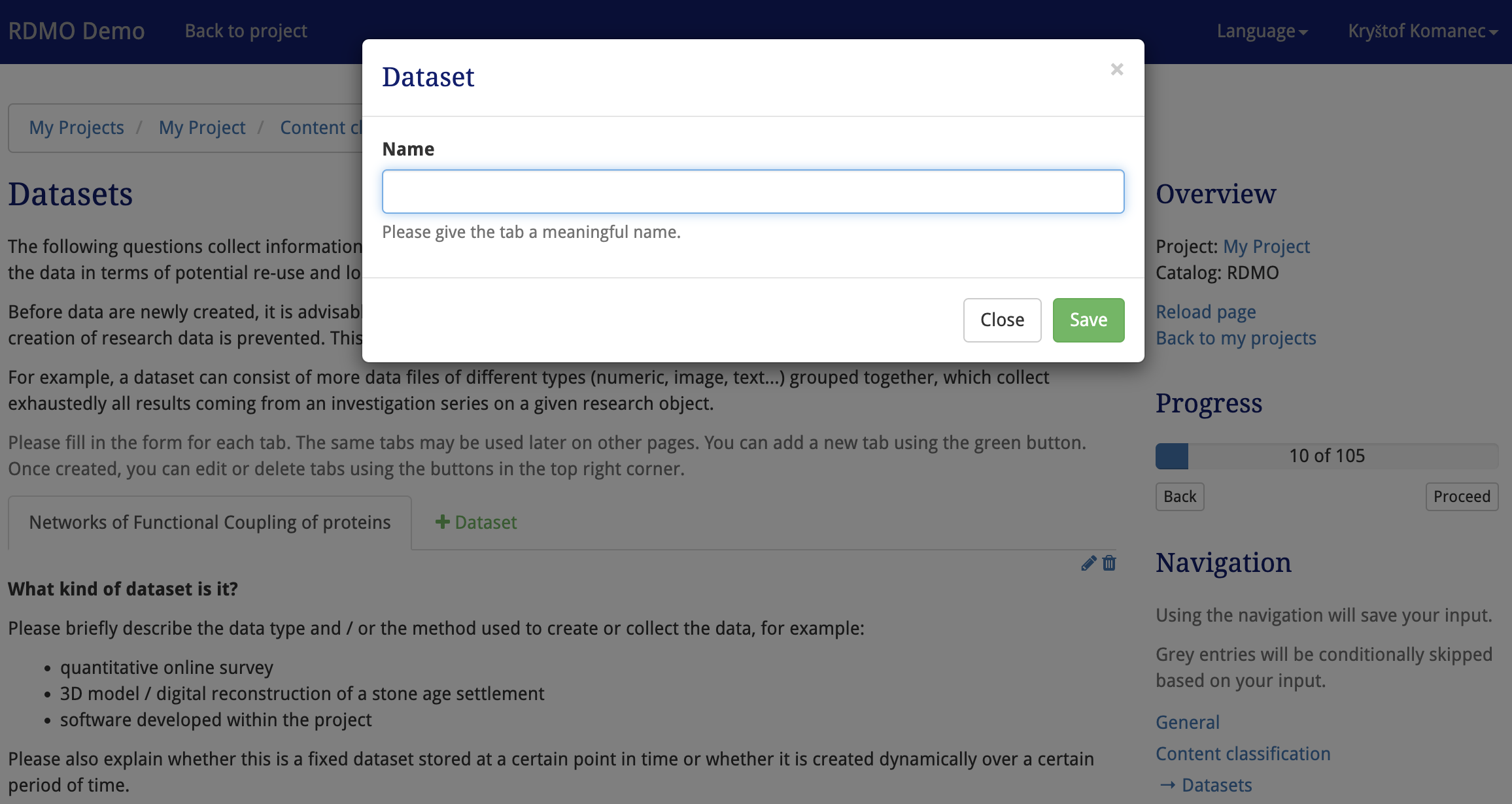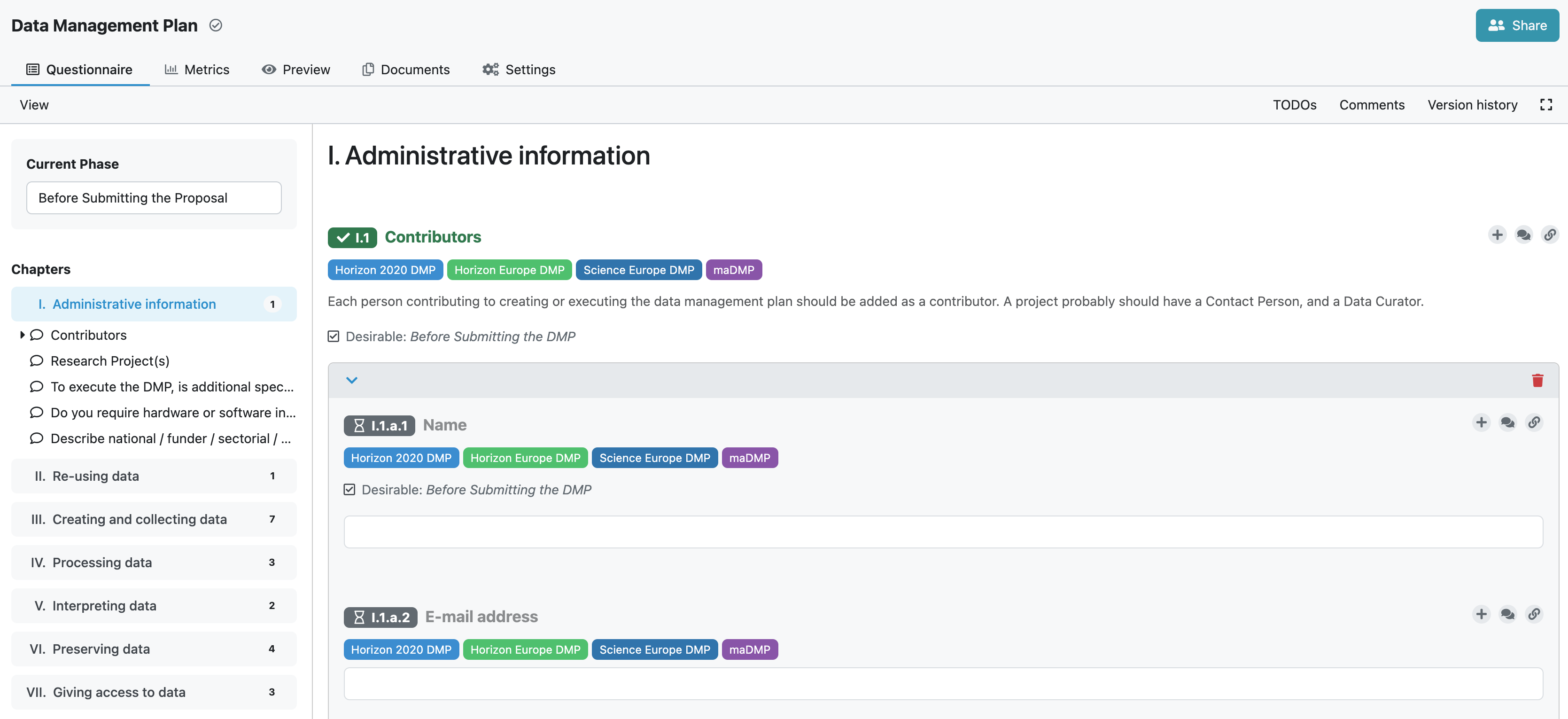This blogpost focuses on a comparison between The Research Data Management Organizer (RDMO) and FAIR Wizard. Both tools can be used to create Data Management Plans. While FAIR Wizard is a complex service offering not only complete support for the creation of data management plans, it also provides many other features combined into an enterprise-ready solution for data management planning. RDMO, on the other hand, only supports the creation of data management plans without any other services available.

Content of this blogpost focuses on comparison of a few features both tools can offer and how they each approach the same problem as well as UI/UX experience while working with tools. Selecting the right tool for the job is important, as it can ease work and reduce costs. That is why organizations should pay attention to what tools they are going to use. This blogpost, as well as our other blogpost on the comparison of DMPonline and FAIR Wizard, can help them make their decision.
The first thing worth mentioning is that, in contrast to FAIR Wizard, which is hosted in the cloud and offered as a service, even free for up to 10 users, RDMO has to be self-hosted. Even though it has a demo instance available, it should not be used for production-level usage as the data would not be safe. This calls for the need for skilled IT support, because the institution that wants to run RDMO has to be able to do so by itself.
That requires technical skills that might not always be available and incurs additional costs. On the other hand, FAIR Wizard runs in the cloud and requires no additional technical knowledge to use. Institutions often believe that running their own instance of software is cheaper, but it actually costs more, as we explain on our website.
The creation of data management plans is certainly the main goal of using both RDMO and FAIR Wizard. Both tools enable the creation of data management plans using sets of questions answered by researchers, with an output document generated automatically. A strong point of FAIR Wizard is that the Knowledge Model behind the questionnaire can be edited or even completely changed to adjust to institutional needs. This is not possible in RDMO, where only the provided questions can be used.
The preset questions in RDMO enable it to present different templates for output, such as a cost overview. The creation of these templates is slightly easier in RDMO compared to FAIR Wizard because everything is predefined. However, it prevents users and institutions from creating custom questionnaires.
Regarding User Experience, we can find FAIR Wizard to be more polished, clear and customizable in benefit for its users. See the UX comparison table.
| RDMO | FAIR Wizard |
|---|---|
| You have to press the Proceed or Save button all the time. | Every action is saved. You can return to any previous version anytime. |
| Different pages for different information to be filled, overall cluttered. Constant page changing. | All of the information is filled into one questionnaire, which has a well-arranged structure. |
| No versioning or version history. | Every change in the project is saved in the history, allowing you to revert the questionnaire and recover past changes. |
| Limited and static guidance throughout the data management plan creation. | Advices to answers, literature and other sources in questions, metrics, project phases and other ways to guide the research to the best data management approach. |
| Limited user documentation available only in German. | Extensive, well maintained user documentation. |
Although RDMO offers an autosave option, it must be explicitly enabled in the configuration, and it only works with non-text-based questions. This introduces a risk of losing data. Unlike FAIR Wizard, RDMO has no version history, making it impossible to recover lost data. Another exclusive feature of FAIR Wizard is the clear button for each question, enabling quick deletion of any answer's content.

The overall project overview and navigation is better in FAIR Wizard, as it is clearly structured and polished. In contrast, the UI of RDMO is disorganized and it is really easy to get lost in a heap of questions, tabs, progress screens and modal windows to entry all project information.

One of exclusive features of RDMO would be Tasks, which are automatically generated based on answers to questions. These tasks prompt users to take specific actions based on their answers.
Another great feature of FAIR Wizard is the comprehensive user documentation, which explains all aspects of the tool in detail, is well maintained and updated with each version.
In contrast, RDMO provides an installation guide in English, but its user documentation is only available in German.
FAIR Wizard could be seen as better suited for institutions that not only prioritize the creation of data management plans but also require other beneficial features such as enhanced user management, extensive analytics, and an audit log.
Additionally, FAIR Wizard follows a regular update cycle that includes both release and preview versions of the app. This allows users to test new features before they are fully deployed in the production environment and provide feedback to the developers. In contrast, RDMO updates are sporadic.
Both tools excel in creating data management plans. FAIR Wizard has a polished and clear UI. However, for institutions seeking more than just data management plans, FAIR Wizard stands out as a superior platform. It provides additional value with features like version history, analytics, audit logs, and cloud hosting.
On the other hand, RDMO offers a wider range of templates from the outset and includes German localization.
Choosing the right tool for your job has several implications, such as continuity of use, operational feasibility, and available support. Selecting the correct tool can also lead to cost savings. Therefore, every institution should carefully consider which tool they will use and choose accordingly. Resources such as this blogpost can assist in their decision-making process.
If you are also considering DMPonline as your data management plan creation tool, check out this blogpost comparing DMPonline and FAIR Wizard.